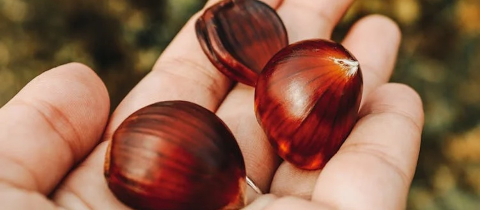Take the carcass of a duck and place 35 grams of its liver and 15 grams of its heart in a one liter bottle filled with a solution of pancreatic juice and glucose. When after forty days the liver and heart have disintegrated, dilute the solution to 100 liters. Repeat this dilution another 199 times, shaking in a specific fashion each time. Then take a small pellet of milk sugar and moisten it with the resulting solution. Package the pellets in a box labeled as “Oscillococcinum” and market it to consumers who wish to prevent or treat the flu homeopathically. Not surprisingly, people, especially those leery of pharmaceutical products, are getting more interested in this purported remedy as the fear of avian flu increases. Can protection against the dreaded “bird flu” really be found in the liver of a bird?
First of all, let’s understand what homeopathy is. Unlike what many think, it is not the generalized treatment of disease with natural substances. Homeopathy was the brain child of Samuel Hahnemann (1775-1843), a German physician who introduced the idea that “like cures like.” A substance that causes symptoms of illness in a healthy person, he maintained, will cure a sick person who suffers from the same symptoms. But to affect the cure, Hahnemann argued, the substance has to be repeatedly diluted and thumped against a leather pillow after each dilution. The greater the dilution, the more powerful the remedy! (Hmmm…can you die from an overdose if you forget to take the remedy? Just a thought). An extreme dilution of an extract of cantharide beetles, for example, was to be an effective treatment for urinary tract infections because a concentrated extract caused a burning sensation in the urethra. Hahnemann carried out numerous such “provings” on his family and friends and came up with a “Materia Medica,” or compendium of homeopathic substances to use in the treatment of disease. But he did not come up with Oscillococcinum. That invention came from Dr. Joseph Roy, a French physician who served in the French army during World War I.
It was during that war that the Spanish flu took the world by storm, eventually killing about thirty million people, 50,000 or so in Canada. Roy naturally took a great interest in the flu and sought to solve its mysterious cause by examining the blood of victims under the microscope. He described seeing tiny microbes that darted or “oscillated” quickly back and forth. He named these “oscillococci” and claimed that they were also to be found in the blood of patients suffering from diseases as diverse as cancer, tuberculosis and gonorrhea. This “universal germ” as he called it, was responsible for many illnesses! If these oscillococci were causing the symptoms of disease, Roy concluded, then a homeopathic solution of the same should be curative.
Actually, this doesn’t even make sense within the tenets of homeopathy which would require a demonstration that oscillococci can cause symptoms in a healthy person. No such effect has ever been shown, which comes as no surprise given that nobody else has ever seen Roy’s oscillococci. To this day we do not know what Roy actually saw through his primitive microscope, but whatever it was, he also observed it in the liver of the muscovy duck. Appropriately diluted, Roy therefore claimed, this duck liver would work against cancer, syphilis, scabies and of course the flu. The other claims have fallen by the wayside, but homeopaths still believe that Oscillococcinum can treat the flu. They have been energized by the finding of viruses in birds, including ducks, which they suggest buttresses the “like cures like” argument, an argument that most scientists find is totally baseless.
Hahnemann was not bothered by the fact that after about 12 of his specified dilutions there was not a single molecule of the original substance remaining, because he knew nothing about molecules. Today, homeopaths have to recognize this fact and explain that the dilutions and shaking leave some sort of imprint on the structure of the water used to carry out the dilutions, and that this altered water somehow drives the disease out of the patient.
Mainstream scientists of course find the notions of increased potency with dilution and associated changes in the structure of water all but impossible to accept and take a very skeptical view of homeopathy. But an implausible mechanism for homeopathy does not mean the practice can be dismissed as ineffective. Perhaps homeopathy operates through some modality that science has not yet discovered. Most unlikely to be sure, but not impossible. The true measure of any medical intervention is whether it can be shown to be effective through controlled trials.
Homeopathy has been with us for over two hundred years and has indeed been subjected to a large number of controlled trials. Researchers at the University of Bristol, led by Dr. Peter Juni, decided once and for all to assemble the results of these trials and determine the efficacy of homeopathy. They searched through the scientific literature and found 110 proper placebo-controlled studies. Their overall conclusion? “We found an effect for homeopathic therapy which is compatible with a placebo effect.”
What about the effect of Oscillococcinum specifically? That too has been examined. Dr. A. J. Vickers of the Memorial Sloan-Kettering Cancer Center in New York looked at the seven studies of Oscillococcinum listed on PubMed, the website which compiles peer-reviewed scientific publications. His conclusion? “Current evidence does not support a preventative effect of Oscillococcinum-like homeopathic medicines in influenza and influenza-like syndromes.” He did, however, find that Oscillococcinum increased the chance of a patient considering the treatment to be effective. So, if the avian flu does strike, I don’t think I’ll put my faith in extremely diluted duck liver juice. But I won’t worry about Oscillococcinum transmitting any avian virus either, seeing that at homeopathic dilutions it does not contain a single molecule from the original bird







